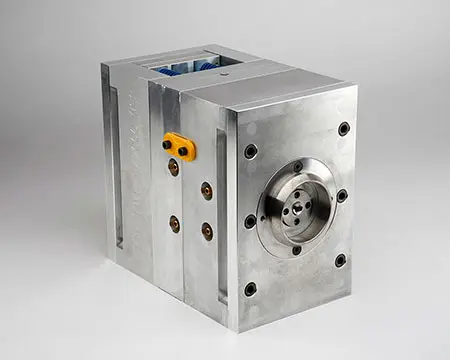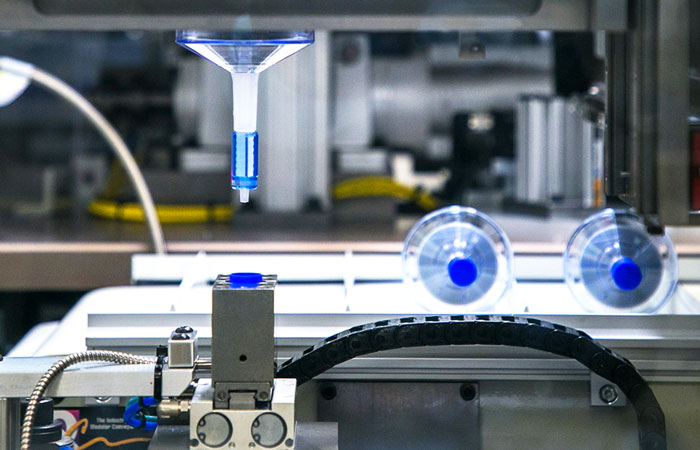Recognizing the Basics of Plastic Shot Molding Procedures
Plastic shot molding works as a cornerstone of modern-day manufacturing, offering a systematic technique to producing intricate parts with accuracy. This procedure not just includes the fundamental actions of melting and infusing products into molds but likewise includes a nuanced understanding of various affecting factors, such as temperature level and stress. As industries significantly demand performance and high quality, the ins and outs of this methodology become extra crucial. Exploring these essential elements can disclose just how even small modifications can lead to considerable renovations in manufacturing results, questioning about the capacity for development in this well established process.
What Is Plastic Injection Molding?
Plastic shot molding is a widely made use of manufacturing procedure that changes thermosetting and polycarbonate products into specific and complex forms. This method is favored for its capability to create high volumes of the same get rid of remarkable accuracy, making it an important method in various sectors, consisting of automobile, customer items, and clinical tools.
The procedure entails melting the selected plastic product and injecting it right into a mold and mildew under high stress. The mold, designed to the specifications of the desired component, permits the liquified plastic to take shape as it strengthens and cools. When the material has solidified, the mold and mildew is opened up, and the completed component is ejected.
Plastic injection molding uses a number of advantages, including minimized waste, uniformity in manufacturing, and the capability to integrate complex layouts that may be testing with various other making approaches. Additionally, it sustains a broad variety of products, each giving unique properties that can be tailored for details applications. As industries remain to introduce, plastic injection molding continues to be at the forefront, enabling the development of advanced products that satisfy developing consumer demands.
The Injection Molding Process
The shot molding procedure is a sophisticated technique that involves several key phases to produce top quality plastic components. Plastic pellets are fed right into a warmed barrel where they are thawed into a viscous liquid. This molten plastic is then infused under high stress into a precision-engineered mold, which shapes the product into the desired type.
Once the mold is filled, the plastic is allowed to cool and solidify, taking the form of the mold and mildew tooth cavity. Cooling time is essential, as it impacts the cycle time and the final homes of the molded component. After enough cooling, the mold and mildew opens, and the ended up part is expelled making use of ejector pins.

Products Made Use Of in Shot Molding
Numerous products can be utilized in the injection molding process, each offering special buildings that accommodate details applications. The most typically utilized products consist of thermoplastics, thermosetting plastics, and elastomers.

Thermosetting plastics, like epoxy and phenolic materials, undergo a chemical adjustment during the treating procedure, resulting in a stiff, inflexible framework. These materials are excellent for applications requiring high heat resistance and architectural integrity, commonly used in auto components and electric insulators.
Elastomers, including silicone and rubber-based materials, supply versatility and resilience. Their special properties make them ideal for applications that require flexibility, such as gaskets and seals.
Furthermore, specialty materials like bio-based plastics and compounds are acquiring traction for their ecological benefits and enhanced efficiency attributes, widening the range of injection molding applications in numerous markets. Recognizing the residential or commercial properties of these products is important for selecting the appropriate type for details tasks.
Advantages of Injection Molding
Injection molding sticks out as an extremely efficient manufacturing procedure that uses numerous benefits for generating intricate parts with precision. Among one of the most considerable benefits is the ability to develop elaborate designs that would be tough or impossible to achieve with various other techniques (Plastic Injection Molding). The process permits thorough functions and tight tolerances, ensuring top quality elements
Furthermore, shot molding is recognized for its rapid production capabilities, making it an ideal selection for high-volume manufacturing. As soon as the mold is developed, parts can be generated quickly, minimizing lead times and raising total efficiency. This performance not only decreases production costs however also gives an affordable edge out there.
The versatility of materials used in shot molding further improves its appeal. A large range of thermoplastics and thermosetting polymers can be used, enabling suppliers to choose products that finest satisfy their particular needs, consisting of versatility, toughness, and warmth resistance.
Furthermore, the process decreases waste, as excess material can usually be reused and recycled. This sustainability element adds to a lowered ecological effect, making shot molding an accountable manufacturing choice. Generally, the benefits of shot molding make it a recommended approach for lots of sectors.
Elements Influencing Product Quality
While various aspects can affect item top quality in injection molding, comprehending these components is critical for achieving ideal outcomes. Key facets consist of material selection, refining parameters, and mold and mildew layout.
Product selection plays an essential role, as various polymers show one-of-a-kind residential properties that influence flowability, toughness, and thermal security. Insufficient material go to this web-site selection can result in problems such as bending or insufficient filling.
Processing parameters, including temperature level, cycle, and pressure time, must be thoroughly managed. Variants in these setups can lead to disparities partially measurements and surface coating. For example, exceedingly high temperatures may cause find out this here deterioration of the polymer, while inadequate stress can cause brief shots.
Mold and mildew design is equally essential, as it establishes the flow of the molten plastic and the cooling procedure. Inadequately designed mold and mildews may bring about irregular cooling rates, causing residual tensions and dimensional mistakes.

Verdict
To conclude, plastic injection molding functions as an important manufacturing process that enables the effective manufacturing of top quality components. Mastery of the injection molding process, including the understanding of materials and the influence of various factors on product quality, is important for achieving optimal results. The benefits of this technique, such as cost-effectiveness and style flexibility, more emphasize its relevance throughout multiple industries, solidifying its standing as a favored option for high-volume manufacturing.
Plastic injection molding serves as a cornerstone of modern-day production, giving a systematic method to producing complicated components with accuracy.Plastic injection molding supplies a number of benefits, including lowered waste, uniformity in production, and the ability to incorporate intricate layouts that may be testing with various other manufacturing approaches (Plastic Injection Molding). As markets continue to innovate, plastic shot molding stays at the center, allowing the growth of innovative products that fulfill developing consumer demands
The shot molding process is an innovative technique that involves several crucial stages to create premium plastic elements.In conclusion, plastic injection molding offers as a critical production process that makes it possible for the efficient manufacturing of high-grade elements.
Comments on “The Advantages of Using Plastic Injection Molding for Custom-made Components Production”